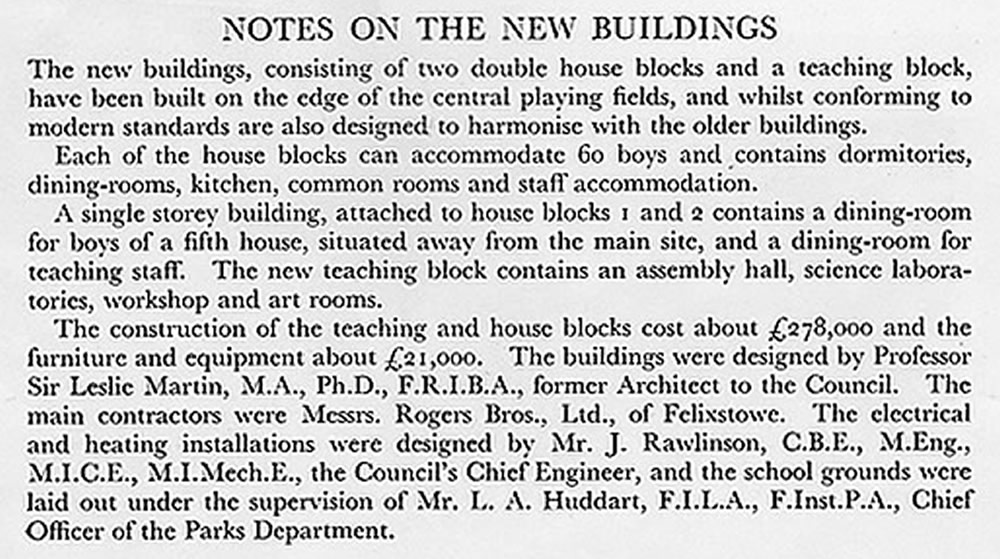Three Cheers for the Assembly-Hall - Chris Snuggs
I returned to WH a few years ago to find Halls and Johnstons Houses demolished. I lived in Halls for four years at probably the most significant time of my life, so seeing it entirely removed from the planet was a shock. The latter was somewhat comforted by the fact that their replacement was a truly magnificent swimming-pool and sports hall, things which we sorely lacked - though we made the best of and enjoyed as much as we could what we did have.
After the shock of not seeing my old house I then I wandered around and realized that the old gym had also gone (logically; it was far too small for real sports work) but the assembly-hall and associated buildings are still there and in use, SIXTY-FIVE YEARS after they were built. And they were built to a post-war ILEA budget, in a way rather simply constructed - but how cleverly. The main hall was clearly well-designed for the number of boys it would have to hold, There were two classrooms at the rear whose hall-facing 'walls' slid back to enlarge the auditorium as shown above. Making use of the slightly sloping terrain to the rear the artroom was cleverly constructed on a lower level. And the stage could be expanded and the rooms behind used for various purposes during school productions. I also remember with great affection the beautifully laid out and equipped physics classroom on the left as one entered. Fred Mudd taught me physics there during my first two years from 58 to 60, and they were hugely inspirational. As for art, though fairly useless at it I enjoyed Ernie Green's lessons; he was a quiet, thoughtful, patient and communicative guy, and those lessons were always relaxing and fun - even for a non-artist.
And the main hall? In a sense it was more the centre of my WHS life than Halls House. We assembled there every day as a community; something very important in a school. The assemblies were of course a key part of school life with their notices, congratulations, reminders, occasional tellings-off - and not least the CofE readings and hymns, which I quite enjoyed even though not a believer. But there was SO much that we did there quite apart from the assemblies:
- concerts, both classical and pop
- operas
- plays
- badminton
- school dances
- Prize-giving and Speech Days
This is a banal list in one way, but as regards the first three items, I have always thought that it was the artistic productions that really made the school stand out. The sports were all great: rugby (of course), cricket, athletics and sailing were all first class, but the productions were really special - and the HALL helped make them so. It might all have been so different in a lesser building.
Of course, at the time, I took it all for granted: it was the hall; it was there; we used it .... but in hindsight I have come to feel considerable affection for the old place in which we spent so many hours learning and doing such creative things.




PS
-
There is fascinating information about the original architects in the brochure about the Opening Ceremony on 18th May, 1959 - a HUGELY significant day in the life of WHS. (Thanks to Mark Frost for unearthing this!)
-
As for "harmonising with the existing buildings", I wonder how on EARTH they could have done that without building in the same materials and style at vast expense. I am not an aesthetic person but the new buildings never jarrred for me - AND they were a huge improvement on the Nissen huts, quaint and practical though they were! The main thing was that the original house (mansion/hall?) remained standing alone, and the REAR of the building in particular was completely unspoiled.

